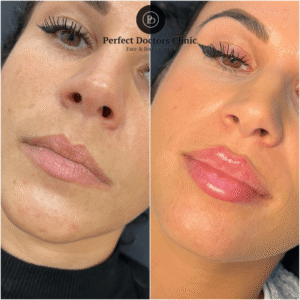
Liposuction has long been one of the most popular cosmetic procedures for removing stubborn fat and reshaping the body. Despite its popularity, many people still have questions about how it works, what to expect, and whether it is right for them. Understanding the procedure, recovery, and potential outcomes can help individuals make informed decisions and feel more confident about choosing liposuction.
This comprehensive guide addresses common concerns and provides clear answers to frequently asked questions about Liposuction.
What is Liposuction and How Does It Work?
Liposuction is a cosmetic procedure designed to remove excess fat from specific areas of the body that do not respond to diet or exercise. It is primarily a body contouring treatment rather than a weight-loss solution.
During the procedure, a thin tube called a cannula is inserted through small incisions to suction out fat deposits. Modern techniques, such as tumescent, laser-assisted, and ultrasound-assisted liposuction, allow for greater precision, reduced trauma to surrounding tissues, and faster recovery.
Common areas treated with liposuction include the abdomen, thighs, hips, arms, back, chin, and neck. The goal is to improve body contours and achieve a more proportionate appearance.
Who is a Good Candidate for Liposuction?
Not everyone is an ideal candidate for liposuction. Generally, individuals who may benefit most include:
-
Those with localized fat deposits resistant to diet and exercise
-
Individuals with good overall health and stable weight
-
People with good skin elasticity, which allows the skin to adjust smoothly after fat removal
-
Those with realistic expectations about results and recovery
Liposuction is not recommended as a solution for obesity or as a substitute for weight loss. It works best for refining body contours rather than dramatically reducing overall weight.
What to Expect During a Liposuction Procedure
Liposuction is typically performed under local or general anesthesia, depending on the extent of the procedure and the areas being treated. The steps generally include:
-
Preparation: The targeted areas are marked, and anesthesia is administered.
-
Incisions: Small, discreet incisions are made for cannula insertion.
-
Fat Removal: The cannula is used to break up and suction out fat deposits.
-
Closing and Dressing: Incisions are closed, and compression garments may be applied to reduce swelling and support healing.
The procedure can take anywhere from one to several hours, depending on the number of areas treated.
What is Recovery Like After Liposuction?
Recovery varies by individual and the extent of the procedure, but common experiences include:
-
Swelling and Bruising: Expected in the treated areas and typically improves over 2–4 weeks
-
Discomfort or Soreness: Mild to moderate pain may be managed with prescribed medications
-
Compression Garments: Often worn for several weeks to support the treated areas and reduce swelling
-
Return to Activity: Light activity can resume within a few days, while strenuous exercise is usually delayed for 4–6 weeks
Following post-operative instructions closely is key to minimizing complications and achieving optimal results.
Benefits of Liposuction
Liposuction offers several benefits that make it a popular choice for body contouring:
-
Targets Stubborn Fat: Effective for areas that resist diet and exercise
-
Improves Body Proportions: Enhances symmetry and overall contour
-
Boosts Confidence: Can improve self-image and satisfaction with appearance
-
Permanent Fat Removal: Fat cells removed do not regenerate, though maintaining a healthy lifestyle is essential
Common Risks and Considerations
While liposuction is generally safe, it is still a surgical procedure and comes with potential risks:
-
Temporary swelling, bruising, or numbness
-
Minor irregularities in skin contour or pigmentation
-
Infection or fluid accumulation
-
Blood clots or complications related to anesthesia
Selecting a qualified professional and adhering to pre- and post-operative instructions helps minimize risks and promotes smooth recovery.
FAQs About Liposuction
1. How long do liposuction results last?
Results are long-lasting as long as a healthy lifestyle is maintained. Fat cells removed during the procedure do not return, but weight gain can affect untreated areas.
2. Is liposuction painful?
Most patients experience mild to moderate discomfort, which can be managed with prescribed medications. Swelling and soreness are part of the normal healing process.
3. Can liposuction remove cellulite?
Liposuction targets fat removal but does not specifically eliminate cellulite. Some improvement in skin texture may occur, but additional treatments may be needed for cellulite reduction.
4. How soon can I return to work or exercise?
Light activities and work can often resume within a few days, while strenuous exercise should typically be avoided for 4–6 weeks or until cleared by a professional.
5. Are there non-surgical alternatives to liposuction?
Yes, treatments like cryolipolysis (fat freezing), laser lipolysis, ultrasound fat reduction, and radiofrequency therapy can help reduce localized fat without surgery. These methods are best suited for mild to moderate fat deposits.
6. Will I have scars after liposuction?
Scars are usually minimal, small, and strategically placed in less noticeable areas. They typically fade over time and can be further minimized with proper care.
Conclusion
Liposuction remains a highly effective option for individuals seeking to refine their body contours and remove stubborn fat deposits. Understanding the procedure, recovery process, and potential risks is essential for making informed decisions.
While it is not a substitute for weight loss, liposuction can provide permanent fat reduction, enhance body proportions, and boost confidence. By following post-operative instructions, maintaining a healthy lifestyle, and having realistic expectations, individuals can enjoy long-lasting and satisfying results from this transformative procedure.
For anyone curious about reshaping their body and improving self-confidence, learning about liposuction and addressing common questions is the first step toward making a well-informed decision.


